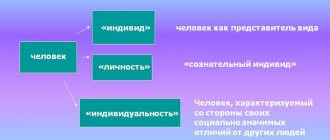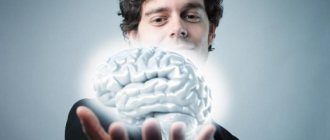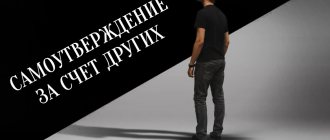Deduction
Translated from Latin (deductio) it means “deduction”. Deduction is the logical conclusion of the particular from the general. This line of reasoning always leads to a true conclusion. The method is used in cases where it is necessary to derive the necessary conclusion about a phenomenon from a generally known truth. For example, metals are heat-conducting substances, gold is a metal, we conclude: gold is a heat-conducting element.
Descartes is considered the founder of this idea. He argued that the starting point of deduction begins with intellectual intuition. His method includes the following:
- Recognizing as true only what is known with maximum obviousness. There should not be any doubts in the mind, that is, one must judge only on irrefutable facts.
- Divide the phenomenon under study into as many simple parts as possible so that they can be easily overcome.
- Move from simple gradually to more complex.
- Compile the overall picture in detail, without any omissions.
Descartes believed that with the help of such an algorithm, the researcher would be able to find the true answer.
It is impossible to comprehend any knowledge except through intuition, reason and deduction. Descartes
Deduction and induction: how to avoid false conclusions
When you wander along logical paths, it’s easy to take a wrong turn . In deduction, if a general statement is false, then the conclusions from it will be false. In induction, insufficient evidence produces an erroneous assumption. Just because one apple is wormy doesn't mean all the others are.
The most dangerous are the erroneous conclusions that are obtained by combining induction with deduction.
Imagine a girl who avoids relationships with the opposite sex due to a bad experience. She thinks like this:
- Inductively obtaining an unreliable conclusion. Sasha cheated on me, Seryozha beat me, Kolya drank all the money away;
- Sasha, Seryozha and Kolya are men;
- all men are assholes.
- all men are goats;
The problem is that the conclusion “all men are assholes” is based on an incomplete sample. Sasha, Seryozha and Kolya are not all men in the world.
An example of a failed deduction:
Induction
Translated from Latin (inductio) means “guidance.” Induction is the logical conclusion of the general from particular judgments. Unlike deduction, reasoning leads to a probable conclusion, all because several bases are generalized, and hasty conclusions are often drawn. For example, gold, like copper, silver, and lead, is a solid substance. This means that all metals are solids. The conclusion is not correct, since the conclusion was hasty, because there is a metal such as mercury, and it is a liquid. An example of deduction and induction: in the first case, the conclusion turned out to be true. And in the second - probable.
Definition
Deduction is a reasoning in which existing premises (statements) become the basis for drawing a conclusion. Example: any number that is a multiple of four is also divisible by two (premise); eight is a multiple of four (premise); therefore eight is divisible by two (conclusion).
Induction is a mental method in which a certain overall picture is drawn up based on individual facts. Example: raspberries – sweet, strawberries – sweet, grapes – sweet; raspberries, strawberries, grapes - berries; This means that all the berries are sweet.
Economic sphere
Deduction and induction in economics are research methods on a par with such as observation, experiment, modeling, method of scientific abstractions, analysis and synthesis, systems approach, historical and geographical method. When using the inductive method, research begins with observation of economic phenomena, facts are accumulated, and then a generalization is made on their basis. When applying the deductive method, an economic theory is formulated, then hypotheses are tested based on it. That is, from theory to facts, research goes from general to specific.
Let us give examples of deduction and induction in economics. The increase in the cost of bread, meat, cereals and other goods forces us to conclude that prices are rising in our country. This is induction. The notification about the increase in the cost of living makes it seem that prices for gas, electricity, other utilities and consumer goods will increase. This is deduction.
Historical and logical.
It is necessary to distinguish between objective logic, the history of the development of an object and methods of cognition of this object - logical and historical.
Objective-logical is a general line, a pattern of development of an object, for example, the development of society from one social formation to another.
Objective-historical is a specific manifestation of a given pattern in all the infinite variety of its special and individual manifestations. In relation, for example, to society, this is the real history of all countries and peoples with all their unique individual destinies.
From these two sides of the objective process follow two methods of knowledge - historical and logical.
Any phenomenon can be correctly known only in its emergence, development and death, i.e. in its historical development. To know an object means to reflect the history of its origin and development. It is impossible to understand the result without understanding the path of development that led to this result. History often moves in leaps and zigzags, and if you followed it everywhere, you would not only have to take into account a lot of material of lesser importance, but also often interrupt your train of thought. Therefore, a logical method of research is necessary.
The logical is a generalized reflection of the historical, reflects reality in its natural development, and explains the need for this development. The logical as a whole coincides with the historical: it is historical, cleared of accidents and taken in its essential laws.
By logical they often mean a method of knowing a certain state of an object over a certain period of time in abstraction from its development. This depends on the nature of the object and the objectives of the study. For example, to discover the laws of planetary motion, I. Kepler did not need to study their history.
As research methods, induction and deduction are distinguished.
Induction is the process of deducing a general proposition from a number of particular (less general) statements, from individual facts.
There are usually two main types of induction: complete and incomplete. Complete induction is the conclusion of any general judgment about all objects of a certain set (class) based on consideration of each element of this set.
In practice, forms of induction are most often used, which involve a conclusion about all objects of a class based on knowledge of only part of the objects of a given class. Such conclusions are called conclusions of incomplete induction. They are the closer to reality, the deeper, more significant connections that are revealed. Incomplete induction, based on experimental research and involving theoretical thinking, is capable of producing a reliable conclusion. It is called scientific induction. Great discoveries and leaps of scientific thought are ultimately created by induction - a risky but important creative method.
Deduction is a reasoning process that goes from the general to the particular, less general. In the special sense of the word, the term “deduction” denotes the process of logical inference according to the rules of logic. Unlike induction, deductive inferences provide reliable knowledge provided that such a meaning was contained in the premises. In scientific research, inductive and deductive thinking techniques are organically connected. Induction leads human thought to hypotheses about the causes and general patterns of phenomena; deduction allows one to derive empirically verifiable consequences from general hypotheses and in this way experimentally substantiate or refute them.
An experiment is a scientifically conducted experiment, a purposeful study of a phenomenon caused by us under precisely taken into account conditions, when it is possible to monitor the progress of changes in the phenomenon, actively influence it using a whole complex of various instruments and means, and recreate these phenomena every time the same conditions are present. and when there is a need for it.
The following elements can be distinguished in the structure of the experiment:
a) any experiment is based on a certain theoretical concept that sets the program of experimental research, as well as the conditions for studying the object, the principle of creating various devices for experimentation, methods of recording, comparison, and representative classification of the obtained material;
b) an integral element of the experiment is the object of research, which can be various objective phenomena;
c) a mandatory element of experiments are technical means and various types of devices with the help of which experiments are carried out.
Depending on the sphere in which the object of knowledge is located, experiments are divided into natural science, social, etc. Natural science and social experiments are carried out in logically similar forms. The beginning of the experiment in both cases is the preparation of the state of the object necessary for the study. Next comes the experiment stage. This is followed by registration, description of data, compilation of tables, graphs, and processing of experiment results.
The division of methods into general, general scientific and special methods generally reflects the structure of scientific knowledge that has developed to date, in which, along with philosophical and particular scientific knowledge, there is a vast layer of theoretical knowledge that is as close as possible to philosophy in terms of its degree of generality. In this sense, this classification of methods to a certain extent meets the tasks associated with considering the dialectics of philosophical and general scientific knowledge.
The listed general scientific methods can simultaneously be used at different levels of knowledge - empirical and theoretical .
The decisive criterion for distinguishing methods into empirical and theoretical is the attitude to experience. If the methods focus on the use of material means of research (for example, instruments), on the implementation of influences on the object under study (for example, physical dismemberment), on the artificial reproduction of an object or its parts from another material (for example, when direct physical influence is for some reason impossible), then such methods can be called empirical.
Additional Information:
Observation is a purposeful study of objects, based mainly on data from the senses (sensations, perceptions, ideas). In the course of observation, we gain knowledge not only about the external aspects of the object of knowledge, but - as the ultimate goal - about its essential properties and relationships.
Observation can be direct or indirect with various instruments and technical devices (microscope, telescope, photo and film camera, etc.). With the development of science, observation becomes more complex and indirect.
Basic requirements for scientific observation:
— unambiguity of the plan;
— availability of a system of methods and techniques;
— objectivity, i.e. the possibility of control by either repeated observation or using other methods (for example, experiment).
Observation is usually included as part of the experimental procedure. An important point in observation is the interpretation of its results - deciphering instrument readings, a curve on an oscilloscope, an electrocardiogram, etc.
The cognitive result of observation is description - recording, using natural and artificial language, initial information about the object being studied: diagrams, graphs, diagrams, tables, drawings, etc. Observation is closely related to measurement, which is the process of finding the ratio of a given quantity to another homogeneous quantity taken as a unit of measurement. The measurement result is expressed as a number.
Observation is particularly difficult in the social sciences and humanities, where its results largely depend on the personality of the observer, his life attitudes and principles, and his interested attitude towards the subject being studied. In sociology and social psychology, depending on the position of the observer, a distinction is made between simple (ordinary) observation, when facts and events are recorded from the outside, and participant observation (participant observation), when the researcher is included in a certain social environment, adapts to it and analyzes events “from the inside.” In psychology, self-observation (introspection) is used.
During observation, the researcher is always guided by a specific idea, concept or hypothesis. He does not simply register any facts, but deliberately selects those that either confirm or refute his ideas. In this case, it is very important to select the most representative, i.e. the most representative group of facts in their interrelation. Interpretation of observation is also always carried out using certain theoretical principles.
With the help of these methods, the cognizing subject masters a certain amount of facts that reflect individual aspects of the object being studied. The unity of these facts, established on the basis of empirical methods, does not yet express the depth of the essence of the object. This essence is comprehended at the theoretical level, on the basis of theoretical methods.
The division of methods into philosophical and special, into empirical and theoretical, of course, does not exhaust the problem of classification. It seems possible to divide methods into logical and non-logical . This is advisable, if only because it allows us to relatively independently consider the class of logical methods used (consciously or unconsciously) in solving any cognitive problem.
All logical methods can be divided into dialectical and formallogical . The first, formulated on the basis of the principles, laws and categories of dialectics, orient the researcher towards a way to identify the substantive side of the goal. In other words, the use of dialectical methods in a certain way directs thought to reveal what is associated with the content of knowledge. The second (formal logical methods), on the contrary, do not focus the researcher on identifying the nature and content of knowledge. They are, as it were, “responsible” for the means by which the movement towards the content of knowledge is clothed in pure formal logical operations (abstraction, analysis and synthesis, induction and deduction, etc.).
The formation of a scientific theory is carried out as follows.
The phenomenon being studied appears as concrete, as a unity of the diverse. It is obvious that there is no proper clarity in understanding the specific at the first stages. The path to it begins with analysis, mental or real dissection of the whole into parts. Analysis allows the researcher to focus on a part, property, relationship, or element of the whole. It is successful if it allows for synthesis and restoration of the whole.
The analysis is complemented by classification; the features of the phenomena being studied are distributed into classes. Classification is the path to concepts. Classification is impossible without making comparisons, finding analogies, similarities, similarities in phenomena. The researcher’s efforts in this direction create conditions for induction, inference from the particular to some general statement. She is a necessary link on the path to achieving the common. But the researcher is not satisfied with achieving the general. Knowing the general, the researcher seeks to explain the particular. If this fails, then the failure indicates that the induction operation is not genuine. It turns out that induction is verified by deduction. Successful deduction makes it relatively easy to record experimental dependencies and see the general in the particular.
Generalization is associated with the identification of the general, but most often it is not obvious and acts as a kind of scientific secret, the main secrets of which are revealed as a result of idealization, i.e. detecting intervals of abstractions.
Each new success in enriching the theoretical level of research is accompanied by the organization of the material and the identification of subordination relationships. The connection of scientific concepts forms laws . The main laws are often called principles . A theory is not just a system of scientific concepts and laws, but a system of their subordination and coordination.
So, the main moments in the formation of a scientific theory are analysis, induction, generalization, idealization, and the establishment of subordination and coordination connections. The listed operations can find their development in formalization and mathematization .
Movement towards a cognitive goal can lead to various results, which are expressed in specific knowledge. Such forms are, for example, problem and idea, hypothesis and theory.
Field of psychology
The English thinker Thomas Hobbes was the first to mention the phenomena in psychology we are considering in his works. His merit was the unification of rational and empirical knowledge. Hobbes insisted that there can only be one truth, achieved through experience and reason. In his opinion, knowledge begins with sensibility as the first step towards generalization. The general properties of phenomena are established using induction. Knowing the actions, you can find out the cause. After clarifying all the reasons, we need the opposite path, deduction, which makes it possible to understand new and different actions and phenomena. Examples of induction and deduction in psychology according to Hobbes show that these are interchangeable stages of one cognitive process, passing from each other.
Examples of deductive reasoning
At first glance, this definition may seem somewhat difficult to understand. But in reality everything is very simple. To understand how deductive thinking works, here are some examples:
- If all living people are mortal, then a particular man or boy is also mortal, since they are also people.
- Birds fly with feathers. If a parrot has feathers, then it is a bird.
- The most iron is found in red meat. We see that beef is meat with a reddish-brown tint; accordingly, it contains more iron than other types of meat.
- Reptiles belong to the cold-blooded category. Snakes are reptiles, which means they are similarly cold-blooded.
- If A equals B and B equals C, then A = C.
Sphere of Logic
We are familiar with two types of logical thinking thanks to such a character as Sherlock Holmes. Arthur Conan Doyle introduced the deductive method to the whole world. Sherlock began the observation with the general picture of the crime and led to the specific, that is, he studied each suspect, every detail, motives and physical capabilities, and, using logical conclusions, figured out the criminal, arguing with iron-clad evidence.
Deduction and induction in logic are simple; without noticing, we use it every day in everyday life. We often react quickly, instantly jumping to the wrong conclusion. Deduction is longer thinking. To develop it, you need to constantly challenge your brain. To do this, you can solve problems from any field, mathematics, physics, geometry, even puzzles and crosswords will help develop thinking. Books, reference books, films, travel - anything that broadens one's horizons in various fields of activity will provide invaluable help. Observation will help you come to the correct logical conclusion. Every, even the most insignificant, detail can become part of one big picture.
Let's give an example of deduction and induction in logic. You see a woman about 40 years old, in her hand is a handbag with an unfastened zipper due to the large number of notebooks in it. She is dressed modestly, without frills or frilly details, on her hand is a thin watch and a white chalk mark. You will conclude that most likely she works as a teacher.
Types of knowledge
Objective-logical thinking presupposes a general line; an example is the transition of society from one formation to another.
The objective-historical method is a concrete manifestation of a certain pattern in the infinite variety of its individual manifestations and features. In society, as an example, we can use the connection of individual destinies with the real history of the country.
Sphere of pedagogy
The method of induction and deduction is often used in school education. Methodological literature for teachers is organized inductively. This type of thinking is widely applicable to studying technical devices and solving practical problems. And with the help of the deductive method it is easier to describe a large number of facts, explaining their general principles or properties. Examples of deduction and induction in pedagogy can be observed in any lesson. Often in physics or mathematics, the teacher gives a formula, and then during the lesson the students solve problems that fit this case.
In any field of activity, the methods of induction and deduction are always useful. And you don’t have to be a super detective or a genius in scientific fields to do this. Give your thinking a workout, develop your brain, train your memory, and in the future complex tasks will be solved on an instinctive level.
Methods
These types of knowledge are analyzed by two methods: logical and historical. Any phenomenon can be understood and explained only in its historical development. In order to understand an object, it is necessary to reflect the history of its appearance. Without an idea of the development path, it is difficult to understand the final result. History proceeds in zigzags and leaps; in order to ensure that the sequence is not interrupted during its analysis, a variant of logical research is necessary. To study history you need:
- analysis;
- synthesis;
- induction;
- deduction;
- analogy.
Logical thinking presupposes a generalized reflection of historical development and explains its importance. This method often means a certain state of the object being studied at a specific time interval. This depends on many factors, but the objectives of the study, as well as the nature of the object, are decisive. Thus, to discover his law, I. Kempler did not study the history of the planets.
Observation. Measurement. Experiment
In addition to all the above methods, science also uses other methods for knowledge. They are empirical and theoretical.
Empirical methods are:
- Observation is the perception of reality aimed at a specific object or phenomenon.
- Measurement is a process of cognition in which the parameters of the object of study are correlated with a known unit of measurement.
- An experiment is a special process in which an object is subjected to various influences to determine the behavior of its parameters under given changed conditions.
A very important role in scientific knowledge is assigned to the process of observation. Observation provides science with empirical information that is needed to set new goals and objectives when studying a particular object, as well as to form scientific hypotheses. These hypotheses are tested by conducting experiments. Measurement is also a very important component of scientific knowledge. Here is what the famous English thinker W. Thomson said about this process: “If you know how to measure an object, then you know something about it; if you don’t know how to measure it, then you don’t know anything about it.”
The main task of the experiment is to test certain hypotheses and theories put forward.











